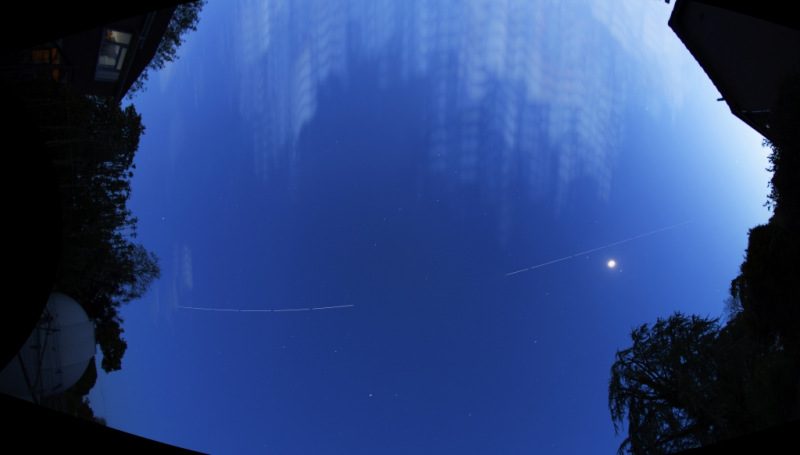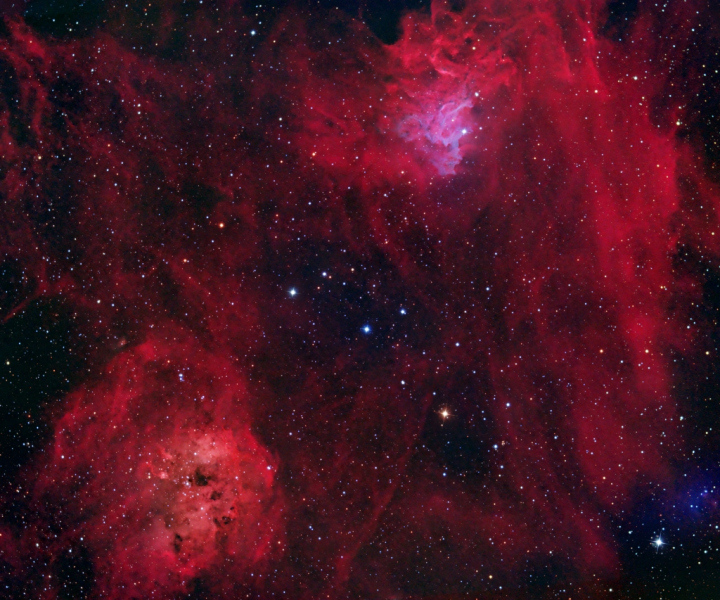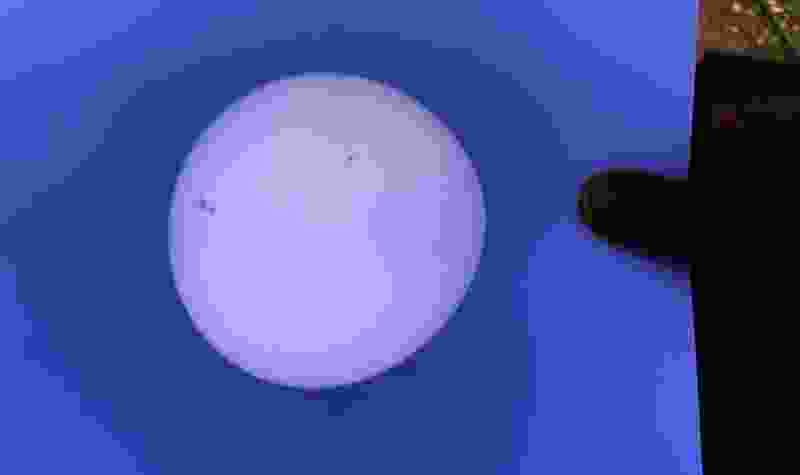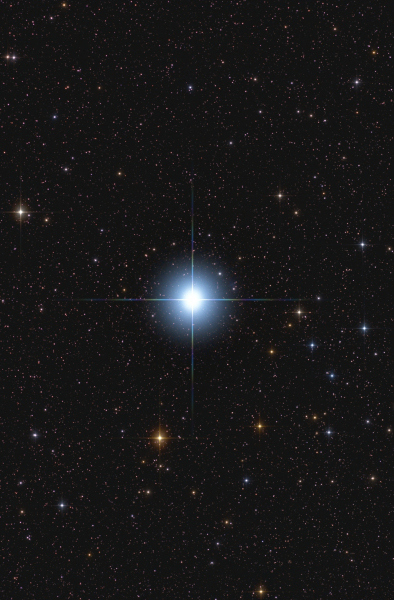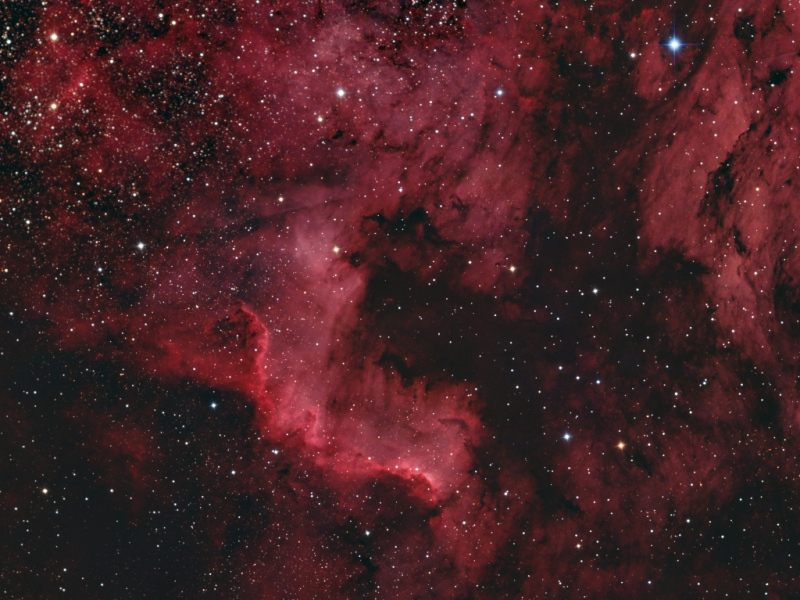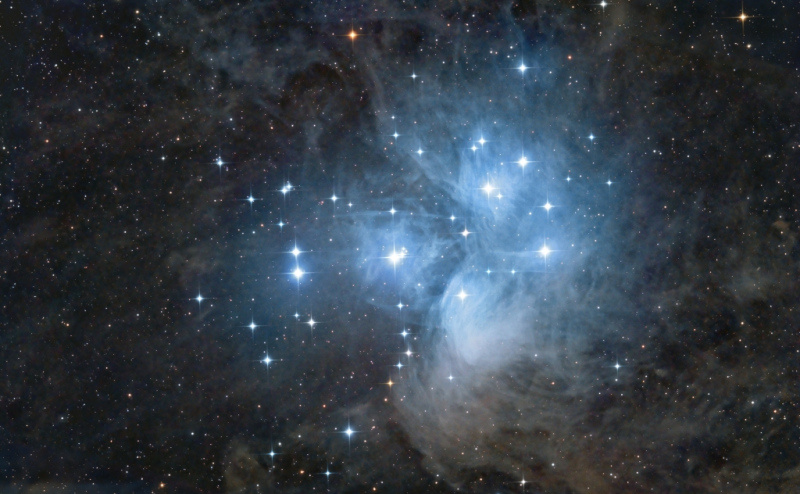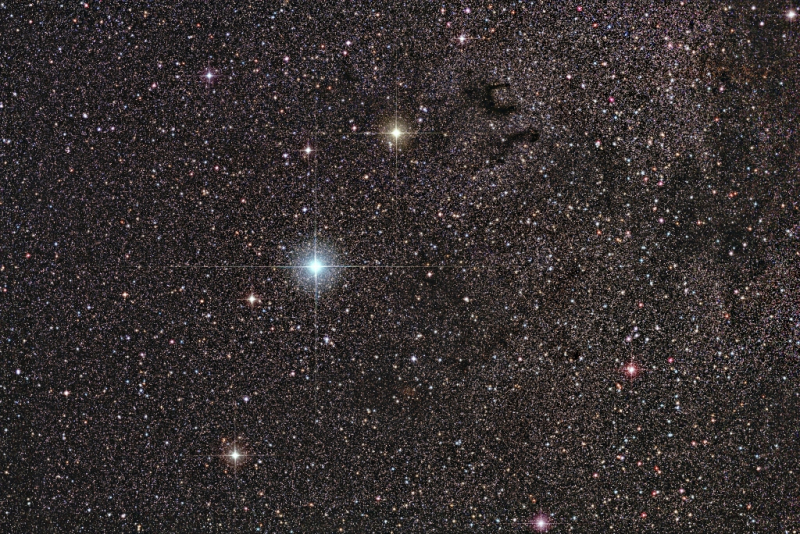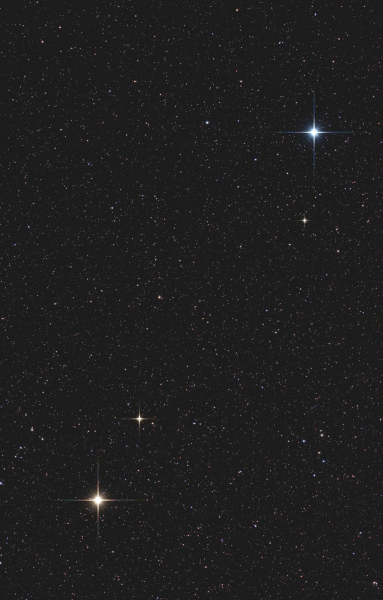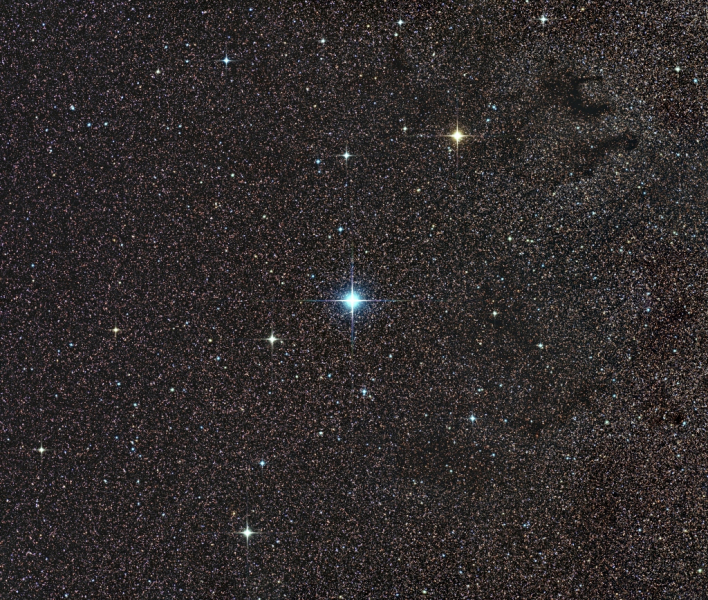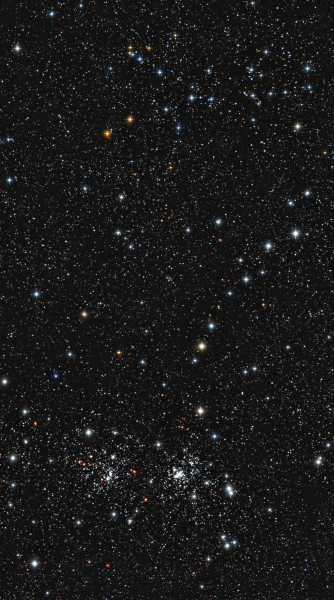Unbelievably it was clear enough last night to have a go at capturing the 9:41 p.m. 7-minute space station pass.
I used the Canon 15mm fisheye lens on the Canon 5D MkII ISO 100, f#2.8, bulb setting, and took ~10-second exposures as the sky was so bright. I moved the camera half-way through the pass (that’s the gap) to get more of the pass in. I won’t do that again! However, I’m pretty sure I have done this in the past with no gap appearing. Of course I have no notes on how I managed to do this which seems to be the story of my life at the moment.
There’s something like 10 days in a row where we have 7-minute ISS passes (near Bournemouth) so hopefully I might get one or two more tries at this.

